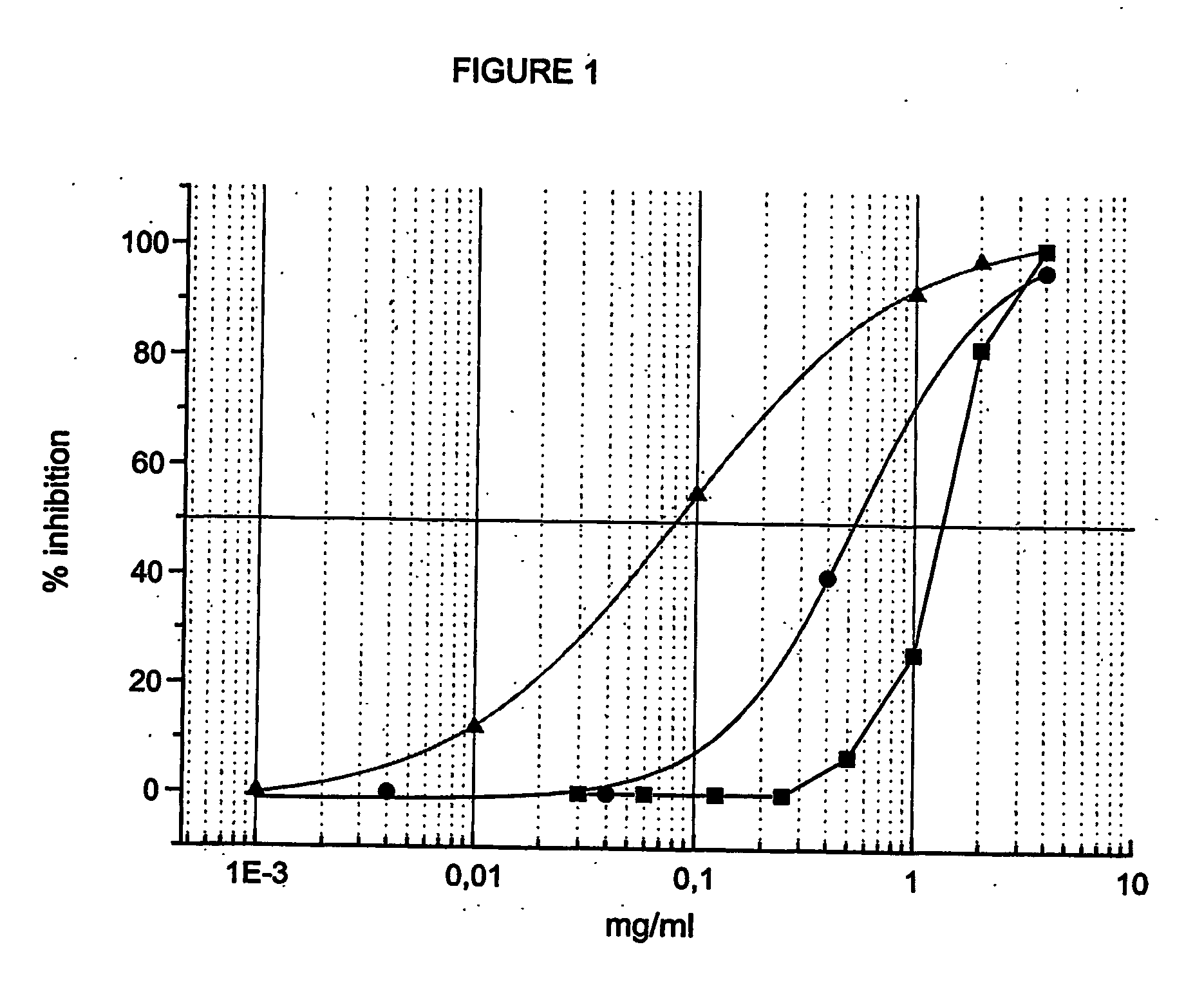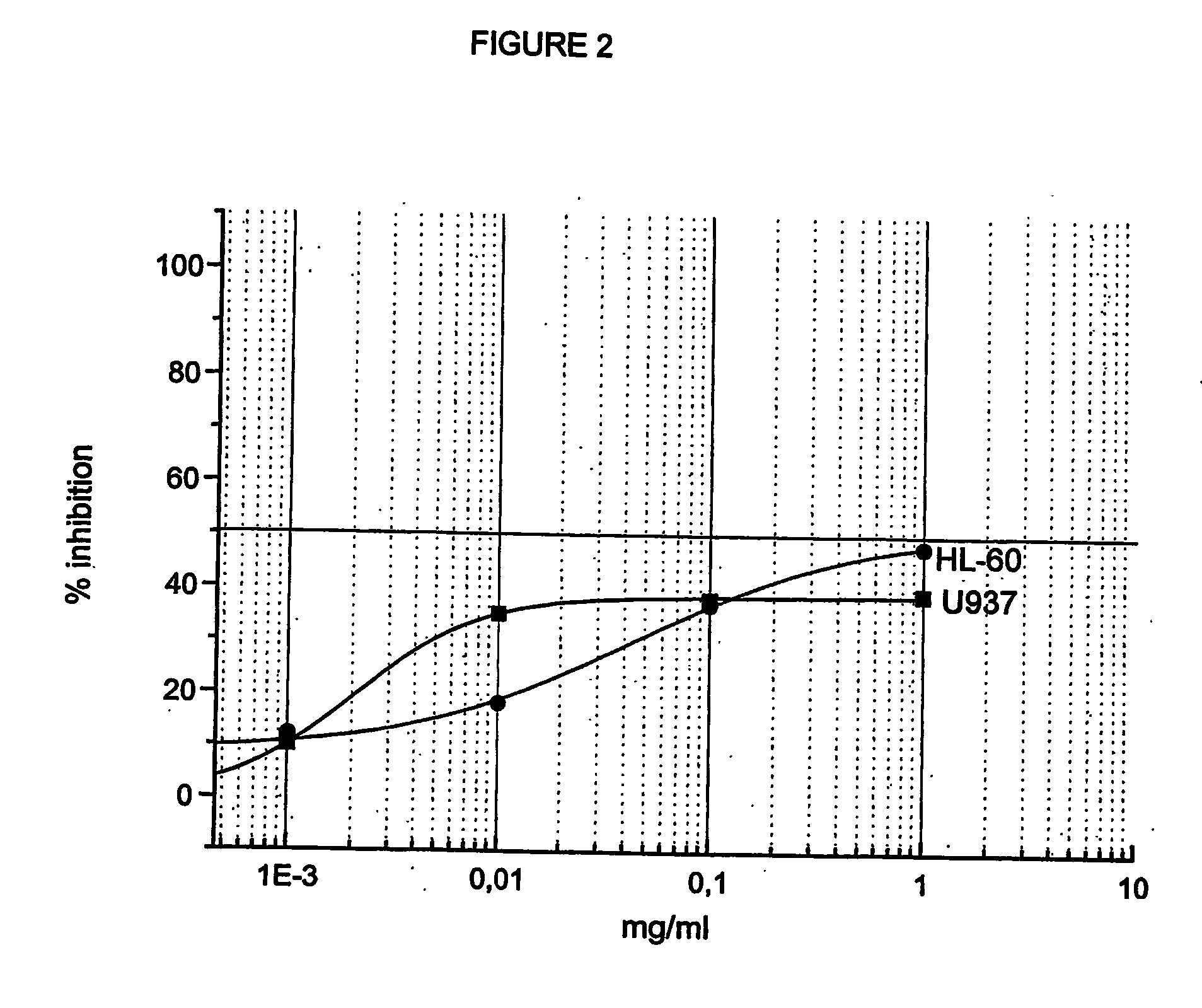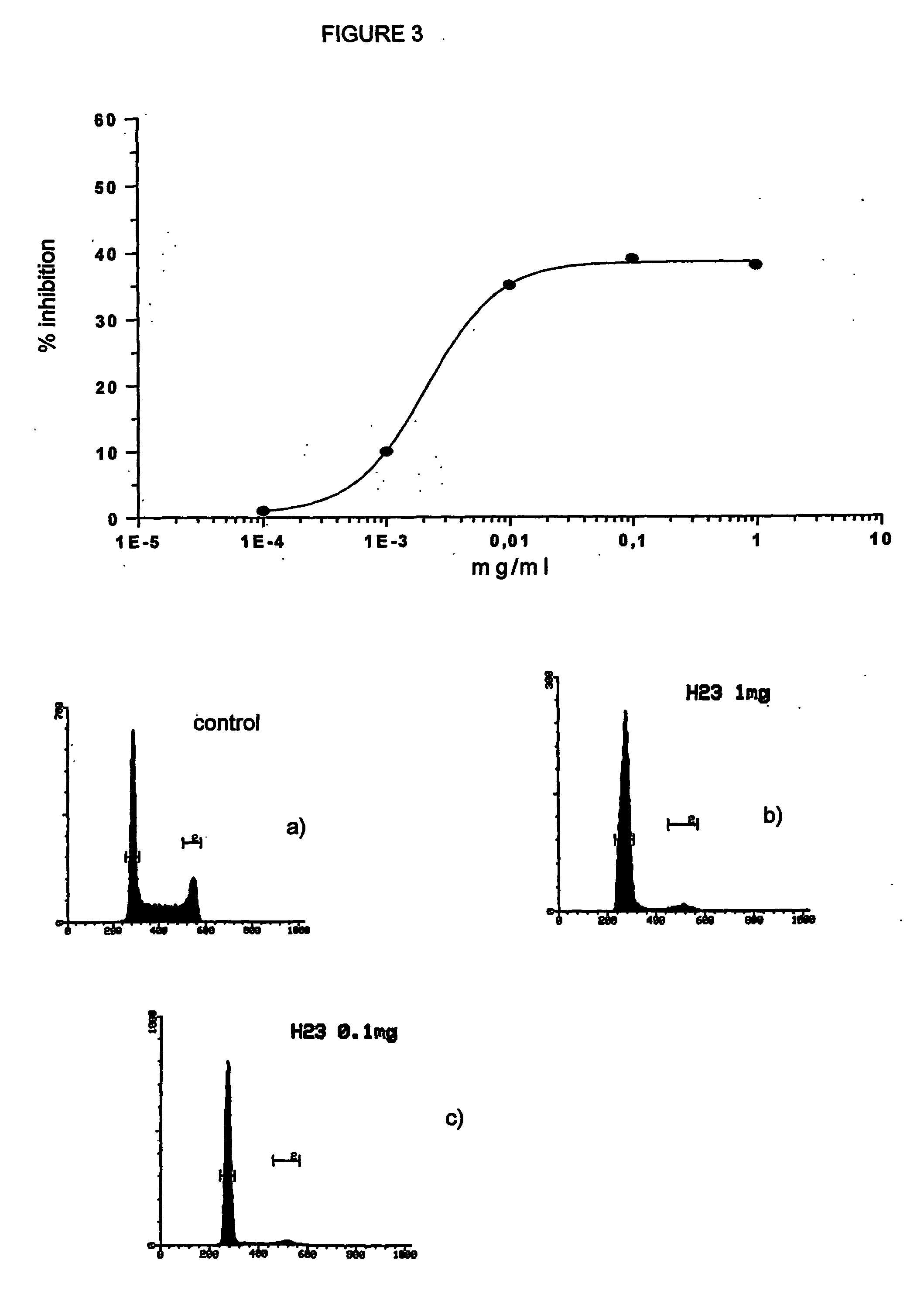Mixed esters of hyaluronic acid with retinoic and butyric acids
a technology of retinoic acid and hyaluronic acid, which is applied in the field of new antitumor drugs, can solve the problems of affecting the clinical use of hyaluronic acid, presenting disadvantages, and affecting the effect of hyaluronic acid, and achieves the effects of reducing the risk of cancer
- Summary
- Abstract
- Description
- Claims
- Application Information
AI Technical Summary
Benefits of technology
Problems solved by technology
Method used
Image
Examples
example 2
Preparation of Mixed Ester with Lower Degree of Substitution
1) Retinoylation.
[0092] The previous test was repeated using half the amount of retinoic acid and butyric anhydride.
(a) Preparation of the TBA-alcoholate of HA-TBA.
[0093] 5.0 g of HA-TBA were solubilized in 20 ml of Methanol and 2.7 ml of a 40% (w / v) aqueous solution of TBA-OH, leaving the reaction for one night under magnetic stirring. The solvent was evaporated at reduced pressure and the product was lyophilized.
(b) Synthesis of Retinoyl Chloride.
[0094] Under nitrogen flow and sheltered from light, 0.5 ml of N,N-DMF and 0.5 ml of oxalyl chloride in 3 ml of diethyl-ether were added to a solution containing 1.25 g of retinoic acid in 10 ml of N,N-DMF by means of a dropping funnel (flow rate of 0.5 ml / min) and the and the mixture was left to react for one hour.
c) Synthesis of Retinoate Ester.
[0095] The previously prepared alcoholate was dissolved in 300 ml of N,N-DMF. The retinoyl chloride solution was then added...
example 3
Preparation of the Mixed Ester on Industrial Scale
[0100] The test in example 2 has been repeated on a scale 10 / 1.
1) Retinoylation.
[0101] 50 gr of HA-TBA were solubilized in 300 ml of methanol and treated with 27 ml of 40% TBA-OH solution.
[0102] 5 ml of N,N-DMF and 5 ml of oxalyl chloride were added to 30 ml of diethyl-ether and a solution containing 12.5 g of retinoic acid in 100 ml of N,N-DMF was added. 2.5 l of alcoholate solution in N,N-DMF was added drop-wise to this solution during 21 hours at room temperature.
2) Butyrilation.
[0103] To the retinoate so obtained, 20 g of DMAP and 13.2 ml of butyric anhydride were added. The reaction was left to proceed for 24 hours and the solvent was evaporated under vacuum. Then the compound was precipitated with ether and the aqueous solution was dyalized. The compound was passed through a resin in sodium form. The compound was then lyophilized and the yield calculated. 7 grams mixed ester were obtained with a DS But=0.325 and a DS Re...
example 4
Effect of the Mixed Esters on a Mammary Carcinoma Cell Line (MCF7) and on Promyelo / Monocytic Tumor Cell Lines (HL60 and U937).
[0104] The selected experimental model consisted of a human mammary carcinoma cell line (MCF7) as example of solid tumor. The effects induced by the mixed ester were compared with those obtained with the two active principles either in free form or bound to HA as monoesters. The presence of the CD44 receptor, specific for HA, was previously demonstrated (Coradini D, Pellizzaro C, Miglierini G, et al. Int J Cancer 81:411-416, 1999).
[0105]FIG. 1 shows that, after 6 days of treatment, scalar doses of mixed esters (range 2-0.0001 mg / ml) exert higher anti-proliferative activity than corresponding concentrations of both mono-esters of butyric acid and retinoic acid (range 4-0.0001 mg / ml). This suggests a possible synergistic effect of the two active principles simultaneously present on the same carrier molecule. Thus, for instance, whereas 1.4 mg / ml of butyric mo...
PUM
| Property | Measurement | Unit |
|---|---|---|
| Mass | aaaaa | aaaaa |
| Fraction | aaaaa | aaaaa |
| Fraction | aaaaa | aaaaa |
Abstract
Description
Claims
Application Information
 Login to View More
Login to View More - R&D
- Intellectual Property
- Life Sciences
- Materials
- Tech Scout
- Unparalleled Data Quality
- Higher Quality Content
- 60% Fewer Hallucinations
Browse by: Latest US Patents, China's latest patents, Technical Efficacy Thesaurus, Application Domain, Technology Topic, Popular Technical Reports.
© 2025 PatSnap. All rights reserved.Legal|Privacy policy|Modern Slavery Act Transparency Statement|Sitemap|About US| Contact US: help@patsnap.com



